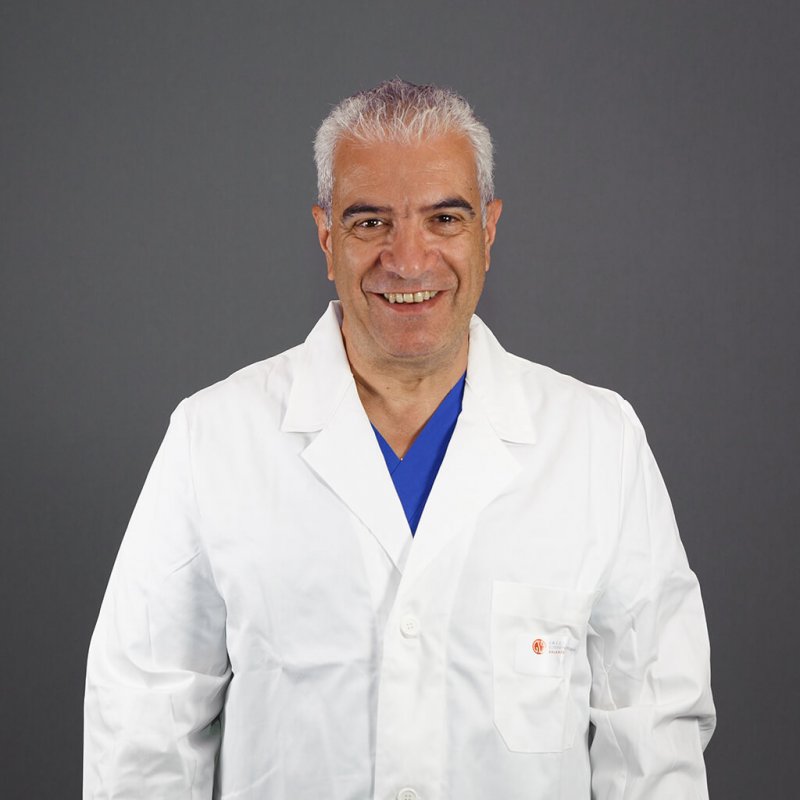Robotic orthopedics in knee prostheses: how it works and what it is used for

Publication date: 02-04-2024
Updated on: 03-04-2024
Topic: Orthopedics
Estimated reading time: 1 min
Article Author
Eleonora Orioli
Medical Editor
Nicola Ursino
Editor and Translator
Viktoryia LuhakovaRobotic orthopedics is a technique that allows the placement of prosthetic implants through the specialized aid of latest-generation robots. It is an advanced technique at the service of surgeons that provides numerous advantages for both specialists and patients.
We talk about it with experts from Ospedale Galeazzi - Sant'Ambrogio, Dr. Nicola Ursino, Head of the Department of Joint Endoprosthetics and Orthopaedic Surgery (C.A.S.C.O.), and Dr. Franco Baldo, Head of the CROM Unit, Reconstructive Surgery and Minimally Invasive Orthopedics.
Robotic surgery in knee prostheses
"In prosthetic knee surgery, there was a patient satisfaction rate of no more than 70 to 75 percent," the specialists say. "This was due to the lack of innovation in surgical techniques over the past 30 years. In recent years, however, things have changed, and robotic surgery has been the driving force for this change."
Robotic surgery for knee prostheses allows for better planning and success of the prosthetic surgery, ensuring:
- less invasiveness;
- tissue sparing and less blood loss;
- prosthesization calculated on the patient's anatomy;
- faster postoperative recovery.
How orthopedic robotic surgery for knee prostheses works
There are various types of robots on the market, and each of them has peculiar characteristics defined by the image acquisitions or mode of action on the anatomical part to be operated on. However, regardless of the type of robot used, prosthetic intervention through robotic orthopedic surgery can be divided into 2 phases:
- navigation;
- intervention.
Navigation
The first phase is called navigation. In this phase the surgeon performs, through the placement of sensors on the anatomical part to be operated on, a comprehensive study of the biomechanics and morphology of the knee, including the ligamentous tension of the knee.
Then the specialist can evaluate the virtual placement of the prosthesis based on the images of the knee created by the computer, modifying the indications of the artificial intelligence according to the philosophy of surgical technique most appropriate to the case.
Intervention
In the surgery phase, the robot acts through the mechanical arms assisting the specialist in guiding the cuts and in the process of preparing the bone tissues that will later accommodate the prosthesis.
The surgeon, acting directly with the mechanical components of the robot, prepares the field and places the prosthesis as it was virtually placed in the first phase.
"Robotic orthopedic surgery and prosthetic implant placement calibrated to the patient ensure greater longevity for the implant itself. This, in fact, positioned according to the correct anatomy of the patient will not be subjected to biomechanical stress, which can occur, for example, in an alteration of ligamentous tension, resulting in less wear and tear," indicate the orthopedists.
Benefits for specialists and patients
Orthopedic robotic surgery offers numerous benefits for both specialists and patients undergoing surgery.
For orthopedists, the preoperative study of the operation, with careful analysis supported by Artificial Intelligence, allows the planning and subsequent implementation of a customized prosthetic implant.
Thus, this technique allows orthopedic surgeons to achieve the best possible outcome for:
- the positioning of the prosthetic knee in the most appropriate location;
- biomechanics in full compliance with the natural physiology of the knee.
For patients, orthopedic robotic surgery provides such benefits as:
- less pain;
- greater comfort at the level of the prosthesis because it is calibrated to one's anatomy;
- less time using crutches;
- shortened rehabilitation time.
Who is a candidate for orthopedic robotic surgery
Robotic surgery is accessible to patients who need to undergo prosthetic surgery without special restrictions, but always on the recommendation of the specialist.
"There are cases in which robotic orthopedics becomes a key tool in determining the best operative strategy, - the specialists say. - This is the situation, for example, with patients who have:
- posttraumatic outcomes;
- the femoral canal already committed by synthetic means or prostheses;
- already undergone osteotomy surgeries in which the anatomy was changed."